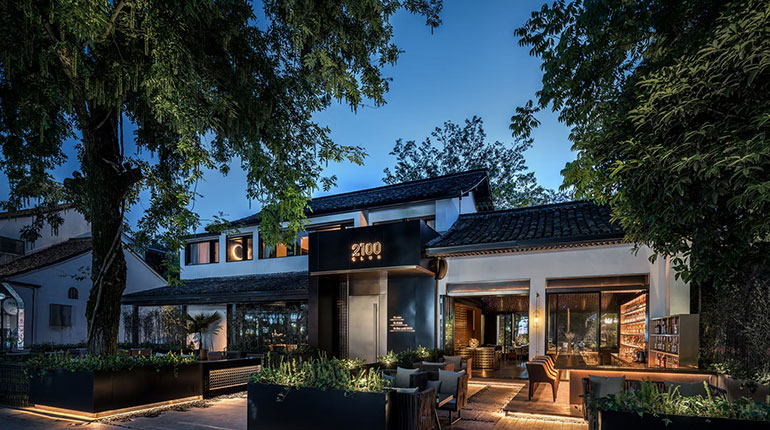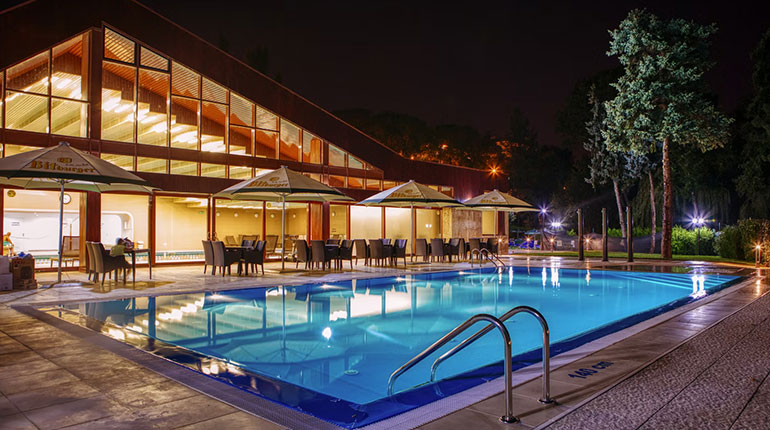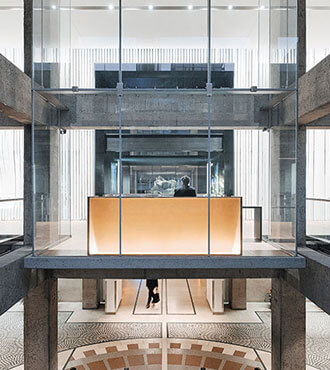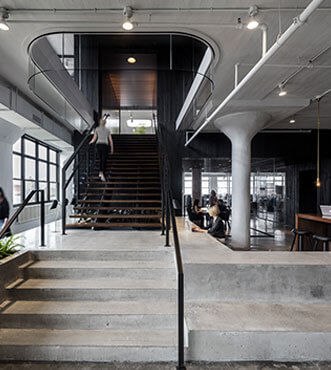Towers and Masts Guidelines - Someka Engineering
This guideline recognizes the following types of telecommunication towers, namely;
Monopole Towers or Post Masts
- Monopole towers consist of tapered steel tubes that fit over each other to form a stable pole.
- A monopole tower is guyed or self supported and be fitted with climbing rungs where necessary. It should have the following features:
(i) Sections is made from hollow, heavy duty, thick steel tubes, flanged steel tubes or low-alloy, high-strength steel.
(ii) Each shaft section is a constant-tapered hollow steel section
(iii) Slip joints are designed with a minimum of 11/2 times the pole diameter at the splice.
(iv) Pipe diameter decrease from bottom to top (v) Monopole are made from galvanised hollow steel pipes or high strength steel and designed for a variety of multi-user configurations and finishes to meet local aesthetic requirements.
(vi) The pipes are tapered to ensure that one pipe base fits into the top of another until the desired height is achieved. A joint in the arrangement have an overlay between the two adjacent pipes.
(vii) The depth of the overlay, the base width and the number of pipes in a particular monopole is determined by expected height of a tower, the thickness of the pipe walls, the base diameter and whether the tower is guyed or not.
Guyed Towers
- These are towers that are stabilized by tethered wires
- Guyed towers are designed and installed in the manner illustrated in Figures below
- It takes cognisance of the following specifications and recommended practices:
(i) Guyed masts may be in lattice, triangular or square, tapered or straight, as well as monopole structural forms.
(ii) Guyed masts are supported and held in position by guy wires or ropes.
(iii) Mast Guy Ropes are made from pre-stretched steel. For every mast, the specified minimum strength of the guy wire is the maximum tension likely to occur in the worst loading condition.
(iv) Guy wires are not over tightened in the installation of guy towers in order to avoid excessive tension which may cause alignment problems, cable rupture and permanent wrapping of tower structural parts.
(v) All sections are straight square sections to eliminate potential problems associated with twisting or the need to shim the legs.
(vi) Typical tower sections have brace configuration with horizontals (z, x or k) and pivot base sections. These tower-structures are wholly of steel, modular and hot-dip galvanized.
(vii) Guyed towers have tube or solid legs with solid bracing which increases the tower rigidity to allow for the twist and sway.
(viii) The design, based on the load calculations determines the working load and the break strength required of the guy wire and ultimately the choice of the size and grade of the wire.
(ix) The choice of each guy earth screw anchor would be dependent on its holding power in the soil, which is a function of its diameter and length to be used to compute the minimum number of guys required.
(x) As a general rule, guys is planted in three directions at 120 o apart from each other. The distance from the base of the tower to the guy anchor base is one quarter of the height of the tower.
Self-Supporting Towers
- Self-supporting towers are free-standing lattice structures
- The use of self supporting towers with tapered sections, and face width that vary according to height and load capacity is recommended when land availability is limited PROVIDED that it is technically feasible.
- Self supporting towers are designed and constructed as Lattice structures in the manner illustrated below. They have the following features:
(i) Triangular or square structure
(ii) Tube legs, angle legs, lattice legs or solid round legs
(iii) Sections in steel angle steel or steel tubes
(iv) Steel angle cross bracing.
(v) Tapered sections
(vi) Face widths vary according to height and load capacity.
(vii) Rest platforms provided every 20 metres of height
(viii) Work platforms provided at all height where antennas are to be installed
(ix) Fitted with climbing ladder Standard support forms for lattice structures are specified as follows:
- Lattice Leg
- Angle Leg
- Tube Leg / Solid Round Leg
Roof Mounts
- Roof mounts are an inexpensive way of elevating signals above roof interference or any other obstruction.
- The design and installation of roof mounts takes cognisance of the following specifications and recommended practices:
(i) Structural checks are made to ascertain the capability of a chosen roof to withstand the additional load being imposed on it by the structure and the entire antenna array it will support.
(ii) As a general rule, roof mounts are limited to light weight structures of low heights and support minimal dead and dynamic loads.
(iii) Roof mounts can be installed in the penetrating or non-penetrating modes and can be self support or guyed. However non- penetrating roof mounts are most suitable for flat surfaces.
General Features of Towers
- In constructing tower legs, schedule pipes or angle steel is used although hollow aluminium pipes may be used for short towers.
- Bracings is of angle steel construction or aluminium in case of aluminium towers.
- Mast sections, when made from steel pipes, is joined to each other through joint plates welded to the base of each section. The width of the mast section joint plates is double the width of the wall of the pipe they are supporting.
- Gussets is used in the strengthening of the weld joint between the base plate and the tower section.
- Each plate have four 20mm diameter holes drilled to accommodate four 18mm bolts, nuts and washers.
- When bolting sections together, bolts is placed upside down with washers and nuts on topside of plates, the connecting face of plates should not be painted.
- Lock nuts is used but nuts on bolts may be clinched if lock nut is not utilized.
- Lock washers and lock nuts is used on antenna support steel work and dish panning arms in order to avoid loss of signals.
- When a tower is made from angle steel, sections is joined to each other through appropriately sized flanges, bolts, washers and lock nuts.
- There is adequate application of bracing to prevent towers been exposed to torque that may result in loss of signal during strong winds speeds.
DESIGN AND CONSTRUCTION
- In designing towers, due cognisance is taken of the following;
(a) Tapered steel and flanged steel poles feature designs that blend well into the environment and require minimum space for installation.
(b) Steel poles are easy to handle and install.
(c) Connections is precision fitted to allow quick assembly of modular sections and the top platform, side arms or mounting frame.
(d) Pole sections is made with identical base plates to permit simplified modifications of mounting heights and antenna reconfigurations.
(e) Tapered steel poles have comparatively smaller base diameters and so demand minimal land space.
(f) Tapered poles can be installed quickly and offer an extremely efficient strength-to-cost ratio. - Superstructure The following parameters apply to all superstructure of towers and masts.
(a) All steel materials to be used in the finishing of the superstructure are hot-dip galvanised and painted accordingly
(b) All aluminium materials have aluminium finish and painted accordingly - Painting
(a) All skeleton type structures are painted to International Civil Aviation Organisation (ICAO) stipulations on obstruction painting. ICAO stipulates that:
(i) For structures up to 212 metres, the structure are given seven equal bands of red and white paint or orange and white paint.
(ii) For structures above 212 metres, nine bands of paint in alternating red and white or red and orange.
(iii) In all cases the top and bottom of mast or tower are painted red or orange. - Substructure The following parameters are applicable to the substructure of towers and masts.
(a) Foundation and Anchors
(i) Foundations for tower and mast structures are designed to withstand the full expected dynamic loads namely; antennae, feeders, wind loading, etc.
(ii) The design take cognisance of the geo-technical investigation findings on soil and wind conditions at the installation site for purposes of determining bearing pressures (vertical and horizontal), other sub-surface conditions, the suitable foundation type (reinforced concrete blocks, standard pad and column, raft, preset rock anchors or piles), construction materials and installation method.
(vii) Three basic physical forces are taken into consideration whilst designing tower and masts foundations. These are:
a. Vertical down load
b. Base shear
c. Uplift load - General
(a) Concreting
(i) All loose material is removed from the bottom of any excavation, and the sides thereof is rough and free of loose cuttings before concrete placement.
(ii) Concrete is placed with the aim of preventing segregation of concrete material and any occurrence that may decrease the strength or durability of the foundation.
(iii) Concrete placement is continuous.
(iv) No construction joints is permitted.
(v) Concrete mixture is such as to enable the concrete develop a minimum compressive strength of 30Nm-2 in 28 days.
(vi) Reinforcement steel is grade 50 deformed bars and is covered with concrete overlay of a minimum thickness of 75mm and Spacers is used to achieve this minimum cover on reinforcement.
(viii) Concrete should always be thoroughly mixed prior to putting in place, and any water which seeps into excavation is removed prior to placing concrete.
Reinforcement (i) Main reinforcement bars have a minimum concrete cover of 75mm and sufficient auxiliary reinforcement is included to minimize the occurrence of cracking while the integrity of the foundation remains intact. (ii) Reinforcement in block type foundations is for the purpose of ensuring that the total weight of concrete is fully utilized to give the specified resistance to uplift forces.
(b) Reinforcement
(i) Main reinforcement bars have a minimum concrete cover of 75mm and sufficient auxiliary reinforcement is included to minimize the occurrence of cracking while the integrity of the foundation remains intact.
(ii) Reinforcement in block type foundations is for the purpose of ensuring that the total weight of concrete is fully utilized to give the specified resistance to uplift forces.
(c) Factors of safety
(i) In all cases, the factors of safety for foundations and any component thereof against overturning is made for the worst design load condition.
(ii) In the case of guy anchor blocks, a safety factor of 2 is applied to the maximum design guy tension.
(iii) In calculating the resistance to shear (for the foundation only) the friction between the bottom face of the concrete and the soil is taken into account
(iv) In the case of guy anchor blocks, the earth resistance in the direction of the horizontal force may be assumed to be utilized, in which case the soil is checked against the possibility of shear-friction failure.
3) EARTHING AND LIGHTNING PROTECTION OF TOWERS AND MASTS
- (1) Generalc
(a) All masts is grounded and the earth resistance measured at the earth terminal block is less than 2 ohms.
b) A lightning air terminal (Faraday Rod) is mounted on mast top and a vertical copper earth wire or tape run down the side of one mast leg to ground and connected to the earth at the terminal box.
(c) Due cognisance is taken of the fact that the most important factor in getting a good earthing is the use of good quality materials for installation. Care is taken to ensure that the earthing and lightening protection design and methods illustrated in Figure 2.33 and 2.34 of the First Schedule to these Guidelines are followed. - (2) Earthing
(a) Earthing and Lightning protection is provided in all completed towers sites to protect equipment from damage and personnel from harm which may result from excessive voltages during a lightning strike.
(b) The arrangement is such that lightning discharge current is prevented from entering equipment rooms.
(c) Equipotential conditions is maintained throughout the site by bonding.
(d) Due cognisance is taken of the following:
(i) that the resistance achievable in an earth installation is directly proportional to the resistivity of the soil at the depth to which the earth rod has been driven.
(ii) When the soil resistivity of a site is not known it can be measured without excavation by using a direct reading metre and earth spikes. - (4) Construction of an Earth The Construction of an Earth to conform to the following specifications:
(a) Lightning rod is clamped to the highest point on the mast.
(b) Ground wire is connected to the lightning rod and is preferably one continuous piece down to the earth ground rod.
(c) Where, the antenna type does not permit the use of a lightning rod point, the ground wire is taped or wire-tied to the mast as far up as practicable.
(d) Ground wire run from the tip of the mast and is connected to the tower, and then run all the way to the ground. - (5) Protective Grounding
(a) Structures is directly grounded to a primary ground.
(b) The ground rods is bonded with a lead of not smaller than 5 mm tinned bare copper connected to the metal base of the structure of each leg of a tower. - 4) SAFETY DEVICES
(1) Safety devices is installed on every tower above the height of 45 metres. Safety devices comprise of the following:
(a) fall arrest systems
(b) climbing ladders or step bolts
(c) guard rails
(d) work / test platforms
(e) rest platforms
(f) anti-climb systems.















